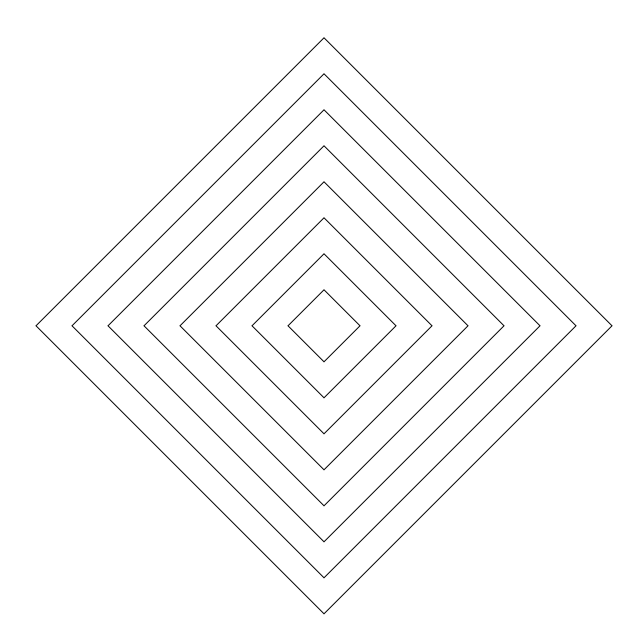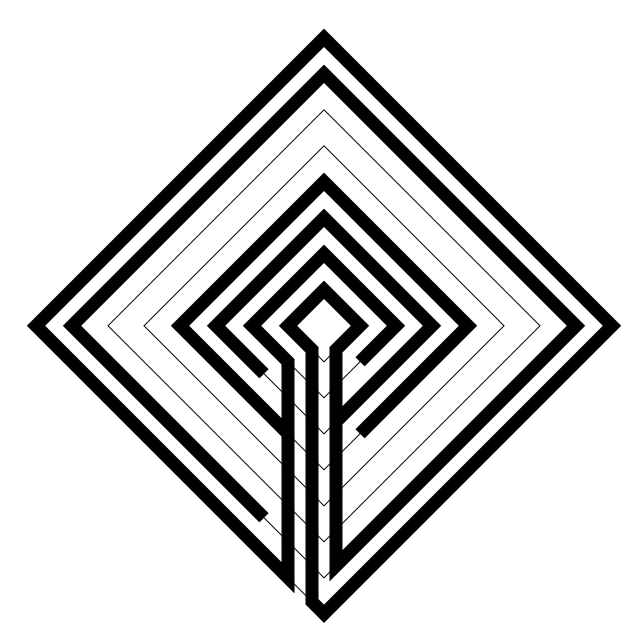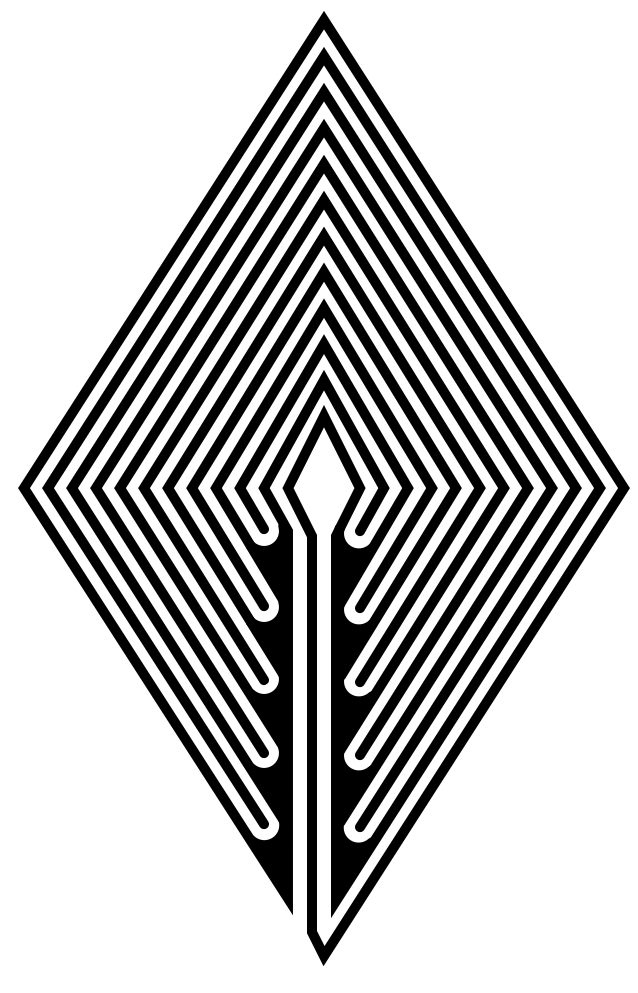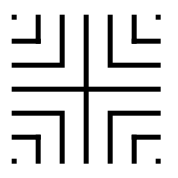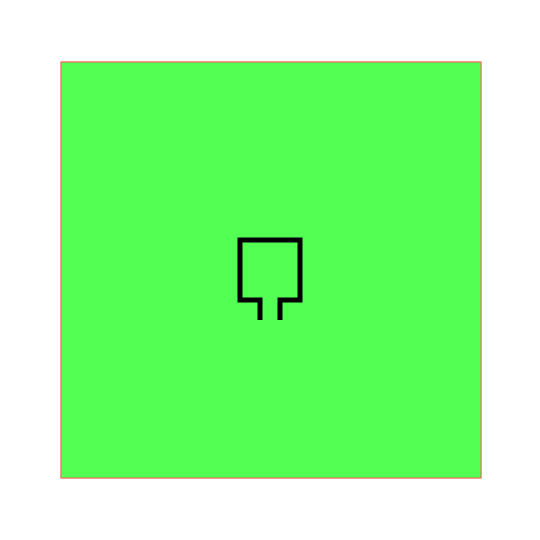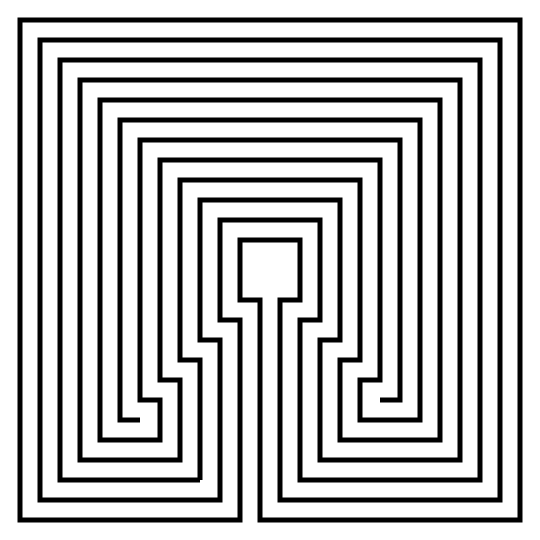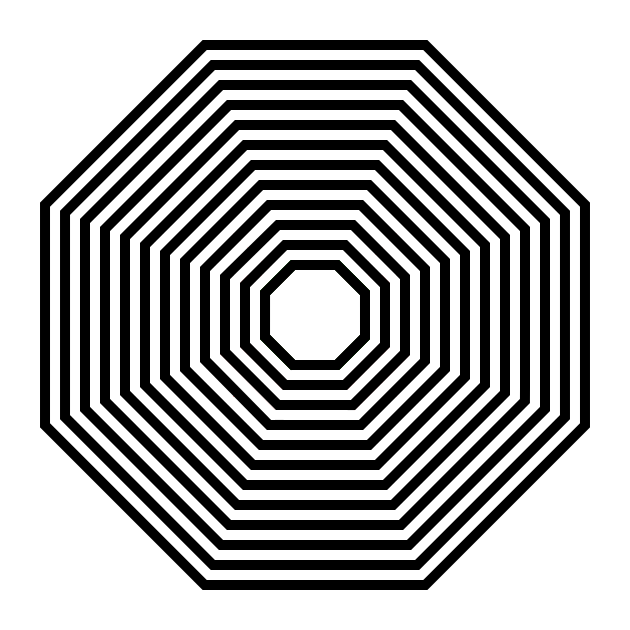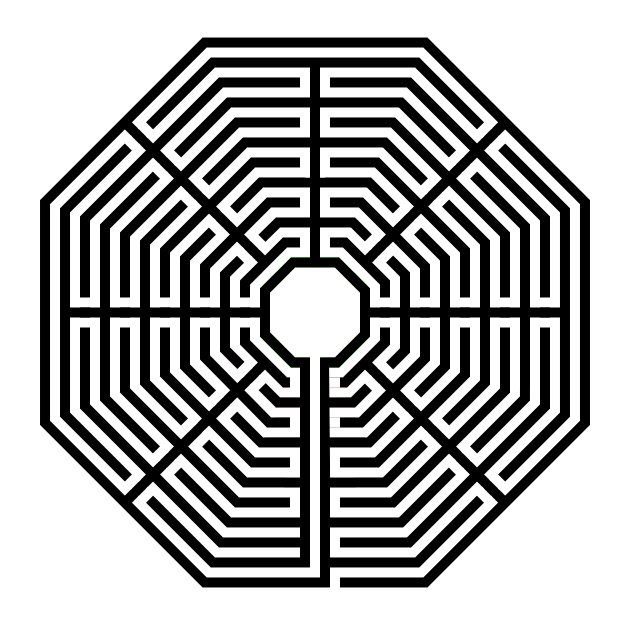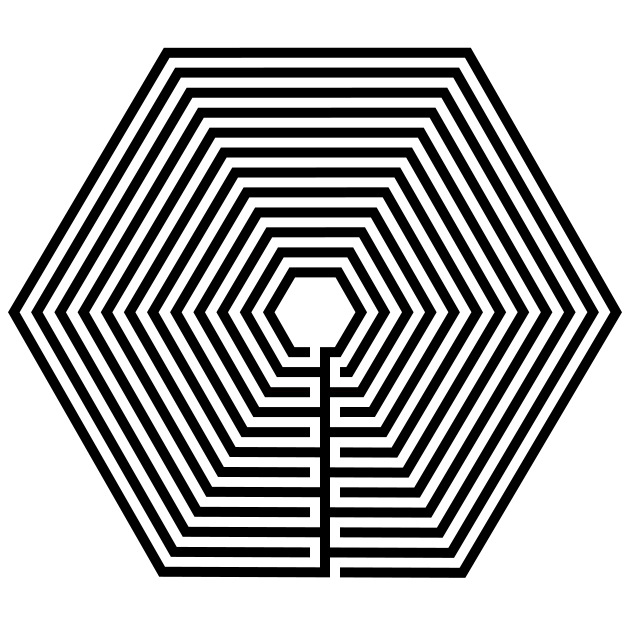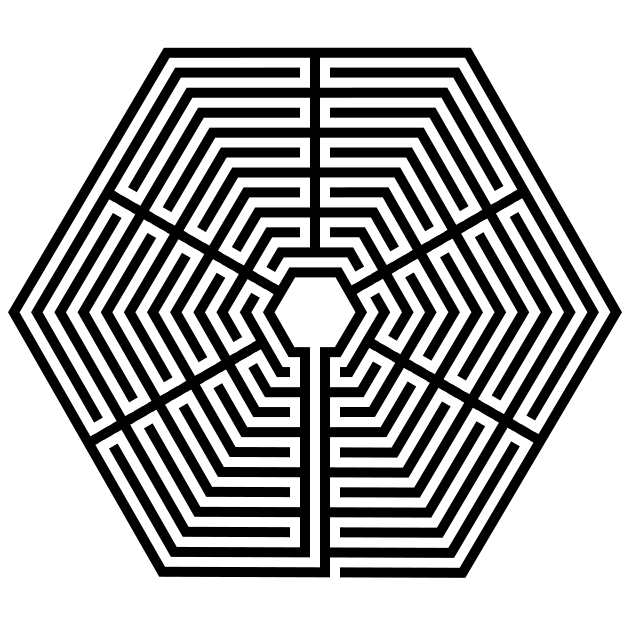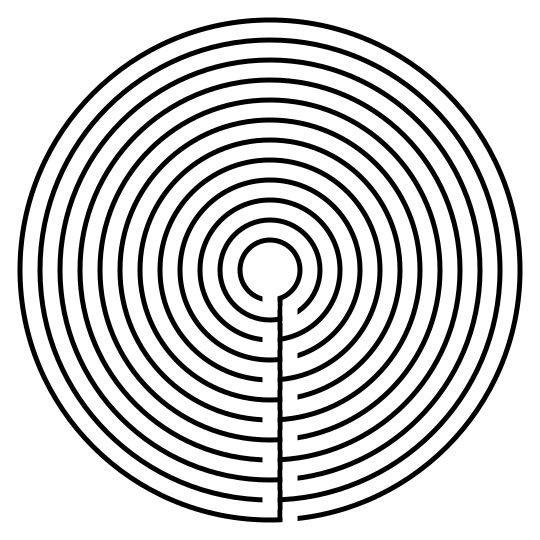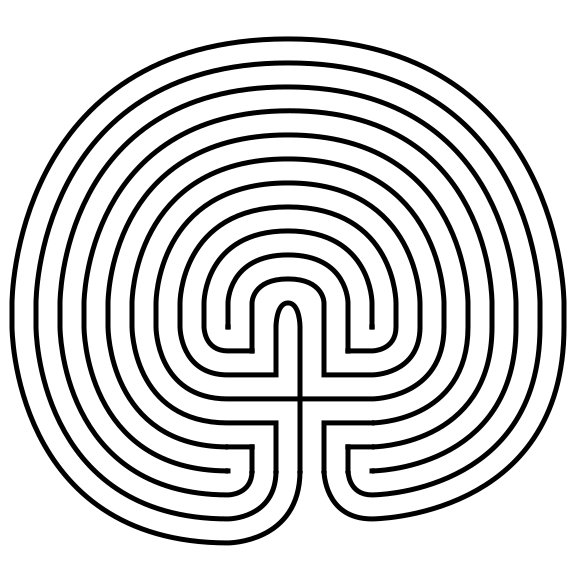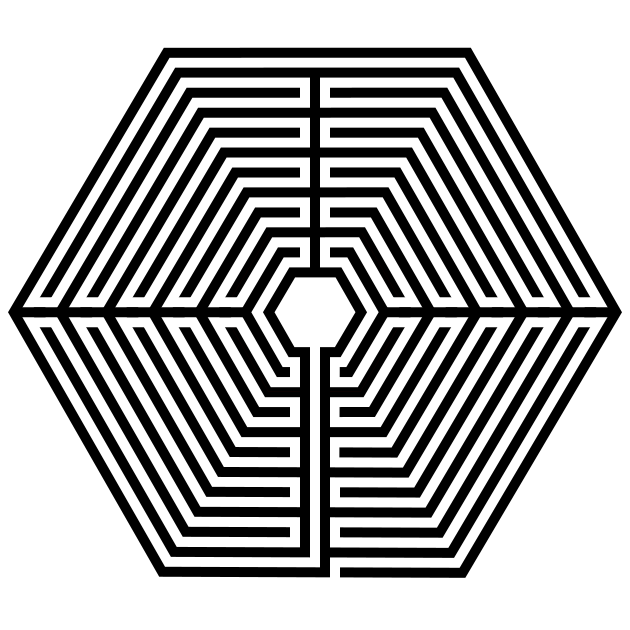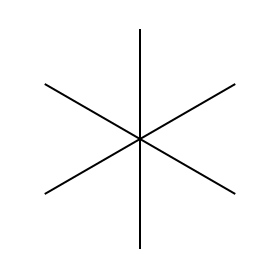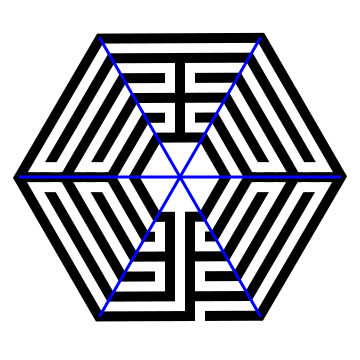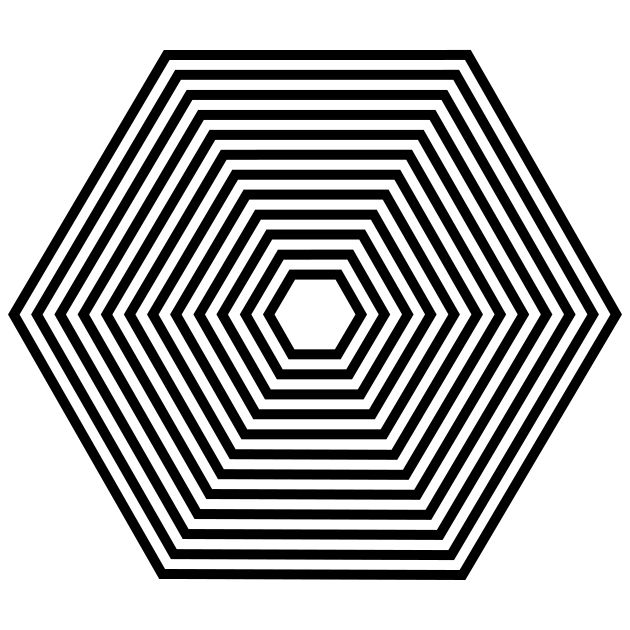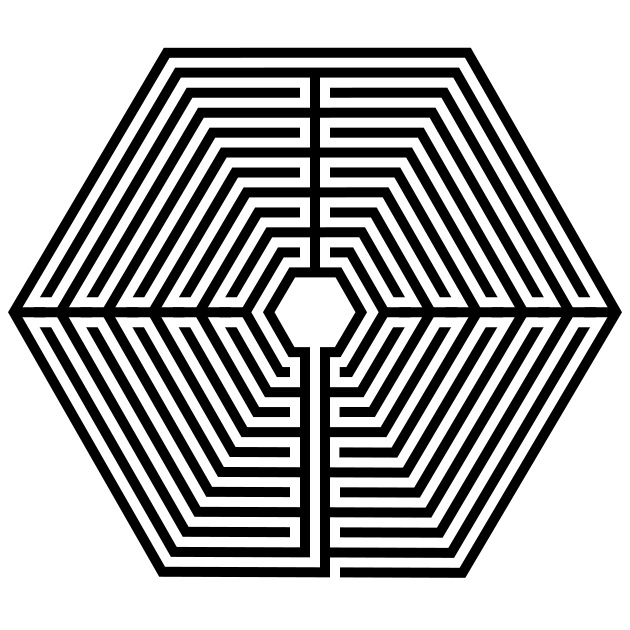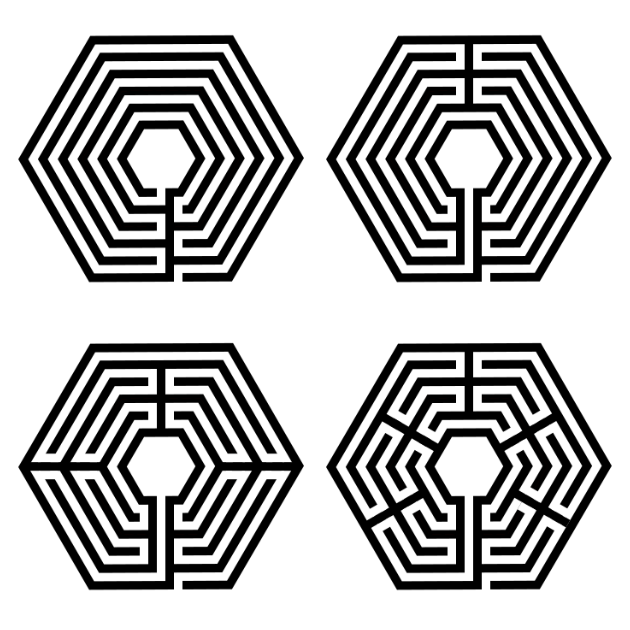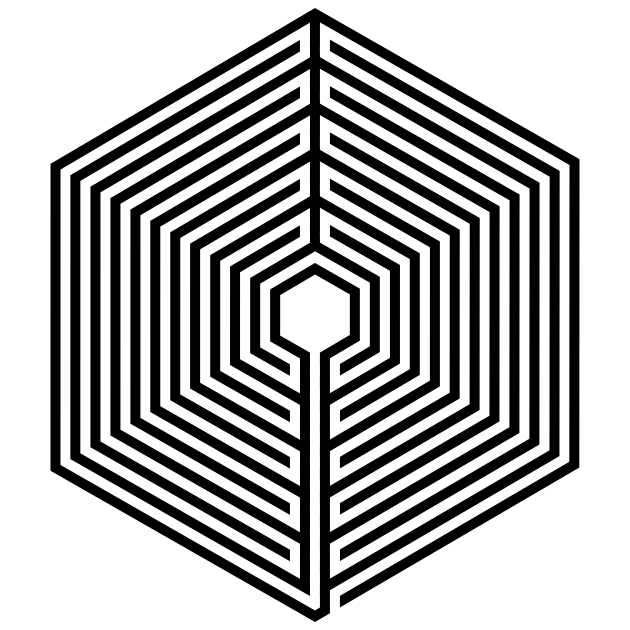In this post I will show you how to draw a 7 circuit diamond labyrinth.
How to Draw a 7 Circuit Diamond Labyrinth
Step 1 Draw 8 concentric diamonds
These will become your guides for the drawing of the labyrinth. Note that the number of circuits you want add one and that is how many concentric layers you need for any labyrinth creation.
PROTIP: Start your drawing with the center goal so you do not run out of room ! This also allows you to pick the size the center goal will be.
AESTHETIC CHOICE: For this example my diamond uses a square turned by 45 degrees. The 11 circuit diamond labyrinth .was made using a 2/3 grid (2 over, 3 up) giving it a sharp angle.
Step 1 - Draw 8 concentric diamonds
Step 2 Draw the outer wall, and pathway to the goal
At the 6 o’clock portion of the center diamond, draw a centered pathway to the edge, while keeping the right side open for the outer pathway on the right. Extend the left pathway to the edge and then create the outer wall all the way around the diamond, leaving only the entrance pathway open on the bottom left of the diamond and turning north until you reach the second inner diamond (this creates the entrance pathway).
AESTHETIC CHOICE: I decided to make this labyrinth using standard equal walls and pathways, but you can also use thinner lines if you want.
Step 2 Draw the outer wall, and pathway to the goal
Step 3 Begin the internal pathways
Continue the entrance pathway around the center goal, leaving the pathway open on the bottom right of the second center diamond. Using the third internal diamond draw a wall to create a second pathway from the center, stopping on the bottom left and leaving the pathway open for the turnback.
Take the right pathway from the center goal and continue it counterclockwise around the diamond, stopping to keep the pathway open on the bottom left of the diamond.
Step 3 Begin the internal pathways
Step 4,5 Continue drawing the internal pathways
In the center portion of the diamond, draw a turnback pathway in the next concentric diamond, creating a third pathway from the center goal. Keep the pathway open on the bottom right for a turnback the other way in the next step.
And draw the next layer back the other way.
Step 6 Finish the internal pathways
One last layer to draw to complete the labyrinth.
Step 7 Delete guides and make aesthetic changes
Delete your guidelines. You can change the widths now if you do not like how it looks. I changed the wall endings at the turn-backs to have curved ends, because I like how it looks.
That concludes our instructions. Good luck in making your own design !
Additional posts you might like:

